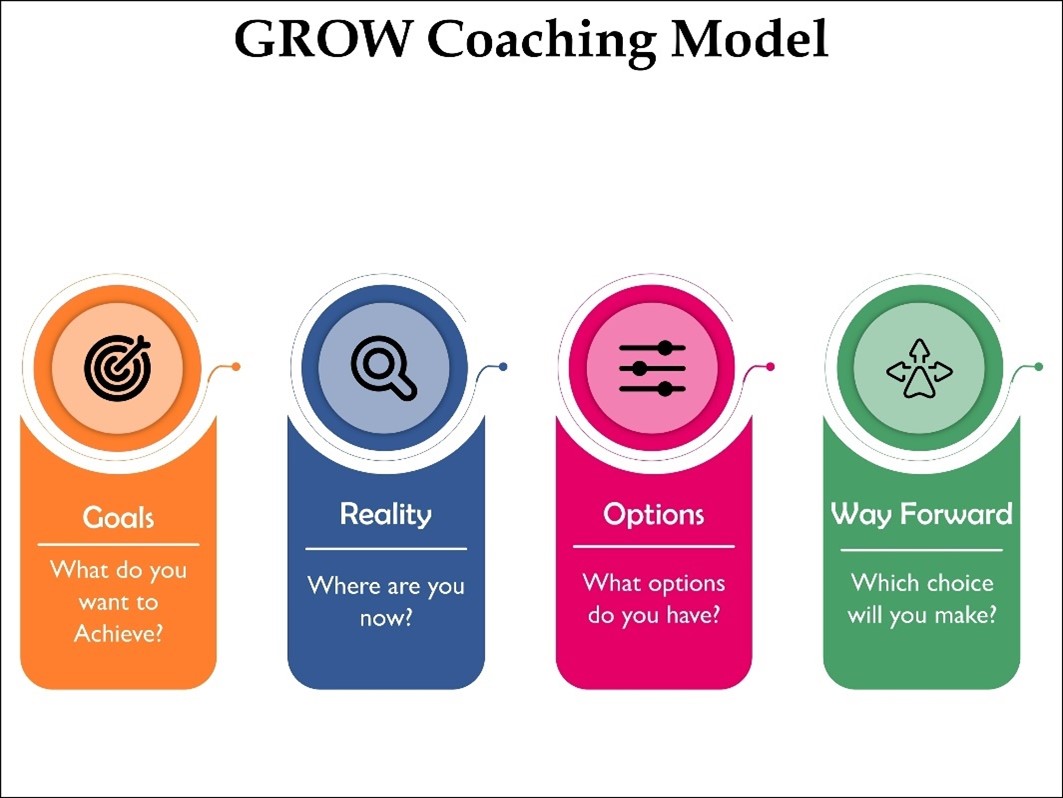How can leaders effectively guide their teams towards achieving their goals while fostering personal growth and engagement? One powerful approach is the GROW coaching model.
What is the GROW coaching model?
The GROW model was developed by Sir John Whitmore (1937-2017) in conjunction with colleagues in the 1980s and disseminated through his book ‘Coaching for Performance’ (Whitmore 2019).
Sir John Whitmore introduced the GROW Model in his book “Coaching for Performance” in 1992, marking a significant contribution to the field of coaching in the UK. He gained recognition primarily for this work and the development of the GROW model.
Alongside his colleagues at Performance Consultants, Whitmore devised the GROW Model to enhance employee performance, foster learning and engagement, and assist team members in discovering purpose within their professional endeavors.
GROW stands for:
- Goal
- Reality.
- Options
- Will (Way Forward)
How to Use the GROW Coaching Model
Goal: What would you like to achieve?
The initial phase of the GROW model involves setting the goal. During this stage, the employee defines an objective they aim to accomplish, whether it pertains to personal growth or professional advancement. It’s recommended to guide the employee to choose goals that adhere to the SMART criteria (specific, measurable, attainable, realistic, and timely).
Reality: What is your present situation?
Frequently, individuals attempt to tackle a problem or achieve a goal without thoroughly assessing their current situation. As a result, they may lack essential information needed to address their goal effectively.
Options: What alternatives can you consider?
After thoroughly examining the current reality, the next step is to explore all possible options for achieving the goal. Encourage your team member to brainstorm a wide range of potential solutions and discuss these ideas together to identify the most viable ones. While it’s helpful to offer your own suggestions, prioritize letting your team member lead the conversation and generate ideas.
Will: What actions will you take following this coaching discussion?
By assessing the current situation and considering various options, your team member will gain a clear understanding of how to reach their goal.Top of Form

Pros and Cons of GROW Model:
Pros of the GROW Model:
- It aids in identifying solutions to problems.
- It helps in understanding the current situation.
- It supports setting SMART goals during coaching.
- It highlights the gap between goals and the current state.
- It facilitates exploration of various options for achieving goals.
- It enhances motivation and self-confidence among trainees.
Cons of the GROW Model:
- The effectiveness of the model depends on the realism of the goals.
- If trainees are disinterested in sharing their current reality, it hinders understanding of the situation.
- Without a clear grasp of reality, identifying gaps becomes challenging.
- Additionally, trainees may occasionally lack the commitment needed to achieve their goals.
Key reasons why the GROW model is important
Leadership development is crucial for organizational success, and the GROW model plays a key role in this area. By guiding aspiring leaders through goal setting, current skill assessment, and actionable planning, the GROW model helps them develop essential competencies. This structured approach not only fosters personal growth but also equips future leaders with the tools needed to drive their teams and organizations forward effectively.
By employing the GROW coaching model, leaders can guide their teams with a structured yet flexible approach that fosters both individual and collective growth. This model not only helps in clarifying objectives and exploring practical solutions but also empowers team members to take ownership of their development.


































































